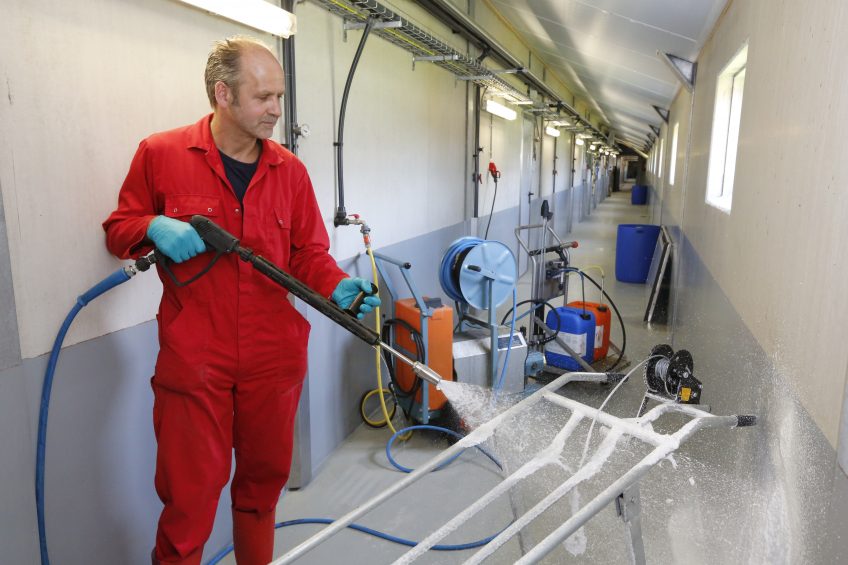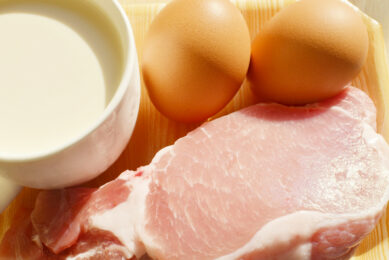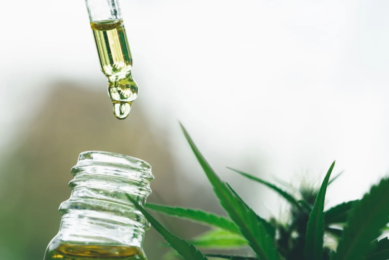Keeping pathogens out with an iron discipline

Is it possible to create a pig house environment that is virtually free from pathogens? Yes it is – it requires dedication, devotion and discipline. The result: in finisher pigs on average an additional daily growth of 80g and lower mortality. Let’s take a look in practice.
Disclaimer: this pig farm feature is an article that is predominantly about things being absent. The article you are about to read does not include any flies or rodents, there are no antibiotics or vaccination protocols, there is no coughing involved, and – very importantly – no dirty boots. Yet there are pigs at the Van Veldhuizen farm, about 2,600 of them, all between 25kg and 120kg. So what has happened here?
PED in Europe
A few years ago, pig farm owner Dik van Veldhuizen tells how Porcine Epidemic Diarrhoea (PED) stopped by his farm, close to Ede, in the heart of the Netherlands. In Europe the virus was of a much milder variety than the one that swept through US farms, but nevertheless, its effects were felt. Mr van Veldhuizen says, “We didn’t have any mortality whatsoever, but for about a week the pigs wouldn’t eat and didn’t grow. They were having a thin type of diarrhoea – it was just one big mess inside the barn.”
Pathogens have many ways to enter a farm
He continues, “How it got in – I have no idea. And how to get it out? You just always think that these things only happen to somebody else – not to yourself.” His take-home message of the entire outbreak was clear – that pathogens in fact have many ways of entering a farmhouse. Gradually he grew conscious of what more hygiene could do for a farm. For instance, he started to notice how many people – swine truck drivers for instance – just popped into the farm without necessarily having to.
HyCare philosophy
This thought process reached a zenith in 2016, when one of the farmhouses received an extension. He decided to have the 2 largest and most modern barns plus the new extension work according to the new ‘HyCare’ philosophy. This is a strategy of working, which is promoted by MS Schippers, a Dutch company focusing on hygiene to help the reduction of antibiotics used on farms. In total 19 rooms on the farm, including aisles and alleys received the following treatment.
Zero-tolerance to pathogens
The HyCare strategy has been tested in trial farms for some time before it was introduced to the market. Essentially, it is a zero-tolerance approach towards pathogens to get into a farm. Several different pathogen pathways are completely and simultaneously blocked to prevent both disease introduction as well as cross-contamination.
- Between batches, a thorough rinsing, cleaning and disinfecting process is a known strategy. Each step of this process deserves attention and is considered the basis of any strategy to keep pathogens out.
- Yet, how to make sure that not a single piece of dirt is left behind? For that, a coating is applied to all surfaces up to 1m high, both in the pens as well as in the alleys in the pig house. This way no ‘gaps’ are left where dirt or pathogens can hide. That allows drying thoroughly and quickly, as the coated concrete does not absorb water or pathogens. Depending on the type of materials used, applying a coating costs between € 15-25 per m2. On average, a coating is estimated to last from 10 to 15 years.
- The water supply can be a source of infection – either because the water is of poor quality or because of the biofilm inside the pipes. The approach used simultaneously cleans the water pipes as well as disinfecting the water continuously. As a result, a couple of demonstration pipes at the Van Veldhuizen farm are transparent. He says, “Before we used HyCare, these pipes were just black, like in our other pig houses. We assumed it was made of PVC as well. Only when we had thoroughly rinsed it, we realised how much biofilm there had been on the inside. Then you wonder – how on earth did we ever have clear water?”
- A 4th pillar of the process is fly and rodent control. Flies can bring pathogens from one part of the farm to another – hence the zero-tolerance policy applies to flies and maggots. A special powder, to be applied on top of the manure in the pit, will help to inhibit any maggots to transform into flies. The strategy at the Van Veldhuizen farm worked – flying insects just weren’t there. Rodents are kept out by blocking entrances to the farm building as much as possible – and placing many traps around the farm. In the past, the farm mainly had mice visiting. “The numbers of visiting mice have now come down,” Mr van Veldhuizen says.
Seeing HyCare philosophy in practice
The idea appealed to Mr van Veldhuizen. “I do like neat and tidy,” he says. He visited De Raamloop – a trial facility by MS Schippers in the south of the Netherlands, where already strong improvements in technical results had been realised using the HyCare philosophy. Mr van Veldhuizen says, “So if it worked at MS Schippers, how much more improvement would be possible on my farm?”
Farm makeover
Having decided to embark on the programme, room for room, the farm received a makeover. Every time a batch of pigs left the farm, the room was cleaned, disinfected and after that, the coating was applied. After about four months, all 19 rooms were running according to the new concept.

Pig Progress regularly goes on-farm in leading swine production sites across the globe. This map is an interactive guide to all 78 locations in 24 countries in all continents we visited over the last few years.
Positive results seen after 4 rounds
Having done four complete rounds in HyCare, the result has been a positive surprise. Mr van Veldhuizen says, “In terms of growth, at the moment we achieve about 880-890 g/day, which used to be about 800 g/day. Also the Feed Conversion Rate has improved, this is now 2.49, which is quite good. It used to be around 2.75 or 2.80.”
This, in turn, has translated into the pigs being at slaughterweight about one to two weeks sooner than in the past – mostly because of diarrhoea or subclinical infections being a thing of the past. Mr van Veldhuizen adds that on top, he does not use any antibiotics and the pigs are kept without vaccination – not in their multiplication stages, nor here. Still, the occurrence of diarrhoea has decreased and so has mortality on his farm, from around 2% to as low as 1.2-1.3%. The pigs that drop out now, usually die of causes that are not related to hygiene, like e.g. a twisted gut, meningitis or severe lameness. All in all – the bottom line is that the investments have paid off financially.
Iron discipline
As the saying goes: a chain is only as strong as its weakest link. Therefore none of these steps should be forgotten – and should be maintained at all times. Hence, perhaps the most important ingredient of all is the mindset of the farmer and the staff. An iron discipline to stick to these hygiene rules is the key to success, explains Mr van Veldhuizen.
That includes showering in, before entering the farm. It also includes wearing slick boots as profiles are more likely to spread manure. And it even includes wearing additional plastic socks on top of the boots every time Mr van Veldhuizen steps into a pen – this way the aisles in between the pens, as well as the main alley are always kept spotless.
“In the beginning, indeed, I had to really focus on what I was doing,” Mr van Veldhuizen says while washing off his boots before storing them, just behind the shower at the entrance of the farm. He hangs them upside down, so it is obvious that each boot is indeed clean. He continues, “But I persisted, and indeed, it helps keep the entire farm very clean. And that’s not only now there is press visiting. It’s just always that way.”

Name: Dik van Veldhuizen (48)
Location: Ede, the Netherlands
Farm: VOF Van Veldhuizen is a finishing pig farm for 2,600 animals, grown on contract. The farm is one of the first to have applied the ‘HyCare’ strategy, in a pilot coordinated with meat processor Meat Friends and animal nutrition company De Heus. Pigs are shipped in at 25kg; and are sent for slaughter at 120kg. The farm has four pig houses, three being in line with HyCare. Mr van Veldhuizen works on the farm with his wife and one of his daughters. The pigs are crossbreeds of a Tempo boar and a Topigs 20 sow. The farm received one star in the Netherlands’ animal welfare scheme.
No flies, no antibiotics?
Closing off – going back to the beginning: are there really no flies at all? In each room there is a small shelf with some fly poison to attract those flies that make it through the defence. At best there are 2 or 3 dead specimens.
And are there really no antibiotics used at all at this farm? Surely, there is the odd pig that needs a cure for lameness for instance? Mr van Veldhuizen says, “Of course – in that case, we take the animal out first, bring it to the older, small 200 pig barn, which did not get a HyCare make-over as it will be knocked down in a few years. There the pig will receive its treatment as well as a new, red-coloured, ear tag. That way we can always remember which pigs did get an antibiotics treatment.”
Mr van Veldhuizen continues, “It makes working with pigs more fun. When the animals are healthier, they just require less work. In turn, it does cost me more work to maintain the pig houses, but less to look after the pigs. I wouldn’t want to go back to my old system.”















